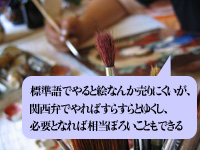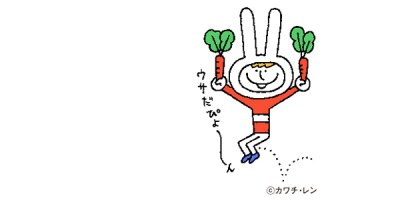
As I’ve already said (part 76), “Other” characters are deployed temporarily, not natively. The majority of them are deployed as jokes in the context of play. We could restate this as follows: because jokes cannot succeed if nobody realizes they are “made on purpose,” anything which “is deployed as a joke” is “deployed with blatant intention.” However, it would be a mistake to think that “Other” characters are not really verbal characters, but rather a blatantly intentional “style.”
The deploying of “Other” characters with blatant intention is nothing more than a tendency, and does not occur all the time. Let’s reconsider the artist who adopted a “Kansai native” character when doing business in order to propel his sales negotiations in a more profitable direction (part 79). This is different from people who change their attitude when doing business and switch to a professional speaking style: “Since we’re talking about money, please let me be serious for a moment.” This sort of professional discussion is clearly intentional (“please let me be serious”) so we can call it “style,” but the artist was different. Although the Shounan-born artist is intentionally behaving like a “Kansai native,” the people he’s doing business with are not aware of this intention. In short, the artist’s “Kansai native” style of speaking is not “blatantly obvious.” Therefore, it is not a “style.” The proof that it is not a “style” is that if the artist’s intentions were detected, this would make both the observer and the observed uncomfortable. As was the case in the “Yokoi Incident” (in the first interpretation). The secretly intentional Kansai dialect of these artists and prosecutors is not a result of “style.” It is the role language of a failed “Kansai native” character whose intention has been sensed, or detected.
Certainly, this isn’t to deny that “style” is related to the making of jokes. The Middle Eastern carpet salesman who said sonna tsumetai koto, iwantoite (have a heart!) when his sales negotiations hit an impasse (part 5), and the people who humorously ask each other mookarimakka? (how’s business?)(1) even though they’re not from Kansai, are speaking “like Kansai natives” as a joke. In other words their intention to “speak like a Kansai native” is obvious. In this sense, speaking “like a Kansai native” is a choice made in response to the situation, and can be called a “style” that is used for a specific purpose.
At the same time, we must not forget that what is being used in these cases is a “Kansai native” verbal character that unintentionally and naturally uses that style of speaking. Here, it would probably be easiest to divide this “presence or lack of intention” into two levels (which we will provisionally call the “base level” and “applied level”). “Kansai natives” speak Kansai dialect and display Kansai-ish behavior without the presence of any particular intention. They are just behaving naturally. So first, we must recognize the style of speaking of this kind of “Kansai native” verbal character as our “base level.” When joking, the Kansai dialect is used with blatant intention at the “applied level;” at the “base level” it is the verbal character, while at the “applied level” it is style, or what we could also call a combined technique.
* * *









(1) In “standard” Japanese: mookarimasuka? (literally: are you making money?), used as a greeting in Kansai.